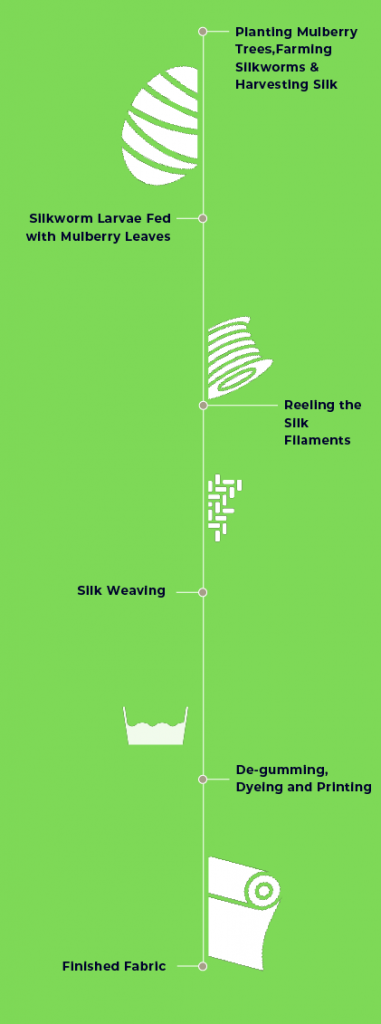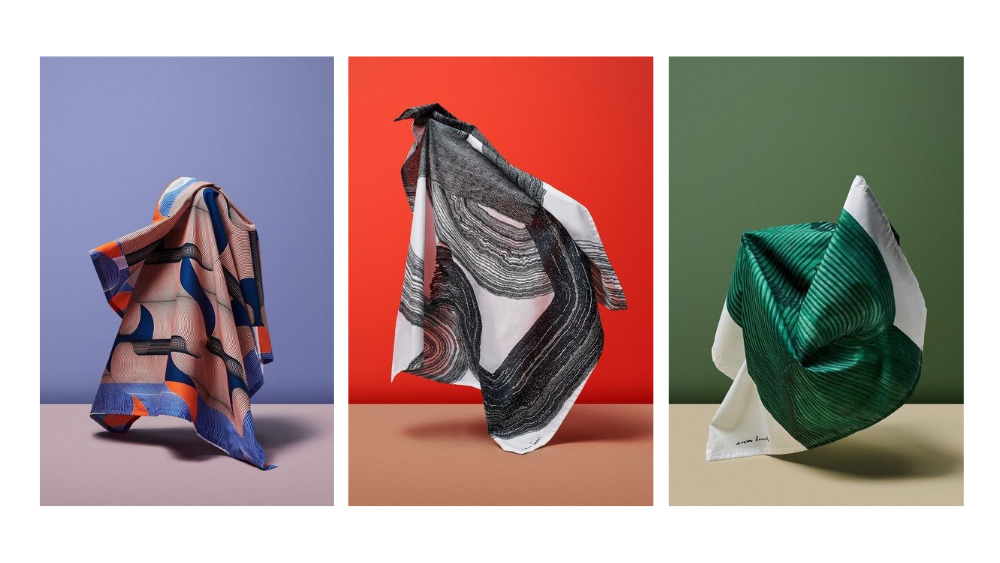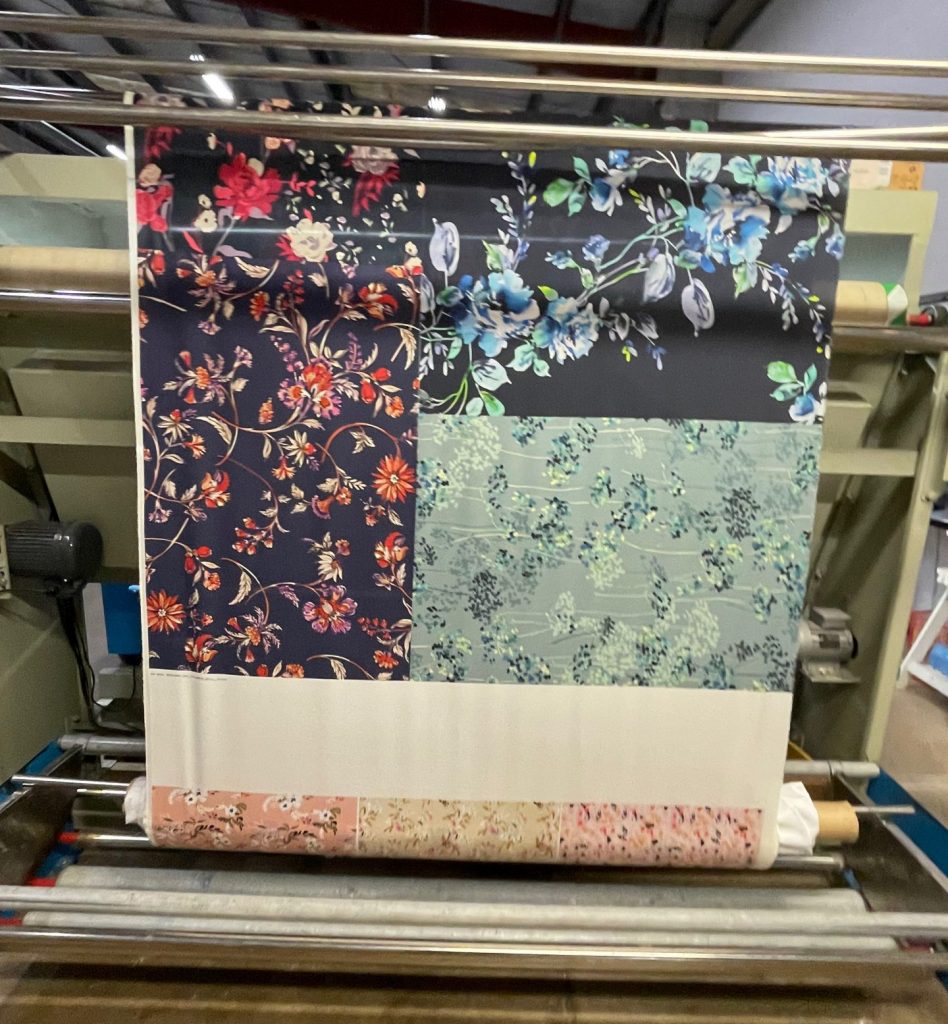Textile or fabric printing originated from pre-industrial textile makers years ago. It was an era when old-world techniques and finely detailed fabrics showed cultural and economic power.
However, over time, new technologies emerged that increased the carbon footprint. As problems arose regarding environmental issues, solutions had to be found in order to compensate for the effects that these technologies caused. Digital fabric printing was one such revolution in the industry – the eco-friendly benefits it brings.
When it comes to producing garments and textiles, the most commonly opted printing method is now digital printing, looking at its myriad benefits. This printing method is a fast and efficient way of translating designs onto a different number of fabrics. However, the most popularly used fabric for digital printing is silk.
 In the wake of global warming, it has become more important than ever to make sure we are doing all in our power to reduce our impact on the environment as individuals and businesses, be it small or big. Manufacturers everywhere are examining how eco-friendly their processes are and how much more room for improvement is there.
There is no denying that manufacturing processes contribute to carbon footprint and have many adverse effects on the environment as a whole.
In the wake of global warming, it has become more important than ever to make sure we are doing all in our power to reduce our impact on the environment as individuals and businesses, be it small or big. Manufacturers everywhere are examining how eco-friendly their processes are and how much more room for improvement is there.
There is no denying that manufacturing processes contribute to carbon footprint and have many adverse effects on the environment as a whole.


What is Digital Fabric/Textile Printing?
Digital fabric printing, an evolved method of printing on fabrics. Unlike standard printing methods, this method uses an inkjet printer to print on the fabric. The printer feeds a roll of fabric via a format inkjet printer in order to directly print on fabrics. Ideally, digital fabric printing looks aesthetic and stunning on organic silks. Silk fabric makes the prints come out all the more fabulous compared to other fabrics. Digital silk fabric printing has transformed the textile industry ever since its inception. An eco-friendly approach to sustain and shine in the fashion industry. In the wake of global warming, it has become more important than ever to make sure we are doing all in our power to reduce our impact on the environment as individuals and businesses, be it small or big. Manufacturers everywhere are examining how eco-friendly their processes are and how much more room for improvement is there.
There is no denying that manufacturing processes contribute to carbon footprint and have many adverse effects on the environment as a whole.
In the wake of global warming, it has become more important than ever to make sure we are doing all in our power to reduce our impact on the environment as individuals and businesses, be it small or big. Manufacturers everywhere are examining how eco-friendly their processes are and how much more room for improvement is there.
There is no denying that manufacturing processes contribute to carbon footprint and have many adverse effects on the environment as a whole.
The Eco-friendly benefits of Digital Organic Fabric Printing
Reduced waste
More eco-friendly options of production are making it to the fashion industry. Directly printing on the garments eventually reduces waste caused due to the output. Digital textile printing on organic silk or any fabric will only use the required amount of ink to print the design. The traditional methods of printing, like screen printing, make use of excessive amounts of ink to translate the design onto the fabric; this leads to having more chances of increasing potentially harmful chemical waste.Reduced water and energy usage
Unlike conventional printing methods, the method of digital fabric printing does not demand you to wash rotary screens when applying new colors constantly. Hence it will not use as much water and power consumption compared to conventional printing. When you come to think of the chemical waste produced from screen printing, you would prefer any day prefer digital fabric printing over it as it offers a much more environmentally friendly process.Less use of set-up equipment
It is a quite straightforward method of printing; it doesn’t require that much setup equipment to be worked efficiently. No screens or plates come to use for the production of different designs. Heavy equipment set up will end up being a total waste for likes of the screen and rotary printing once the designing job is done and production is completed.Produces fine patterns with high resolution and flexibility
The good thing about digital textile printers is that they use less space compared to conventional rotary screen printing. It takes up a lot less ink and electric power. It doesn’t require water to vaporize for digital fabric printing. Such factors keep the costs low and have no adverse effects on the environment either. Hence, it is one such digital printing method that doesn’t break the bank. With digital fabric printing, you can rest assured about the quality of color and print; it is sure to be clean and tidy.Lowered cost
Digital fabric printing on organic silk does not require screen engraving or color separation. Hence, it has more controlled parameters over print head performance when the printing process is still running.Rapid sampling with short-term delivery
Sampling becomes a rapid affair when short-term delivery designs are digitally made and adjusted on the spot. The adjustments in conventional screen printing look for a new rotary screen which ultimately slows down lead time.Understanding Production of Silk –
Sericulture is the process of producing raw silk by raising caterpillars (larvae), particularly tamed silkworm larvae (Bombyx mori). In general, there are two steps involved in the manufacture of silk:- From the egg stage through cocoon completion, take control of the silkworm.
- Mulberry tree production, which provides the worms with leaves to feed.




